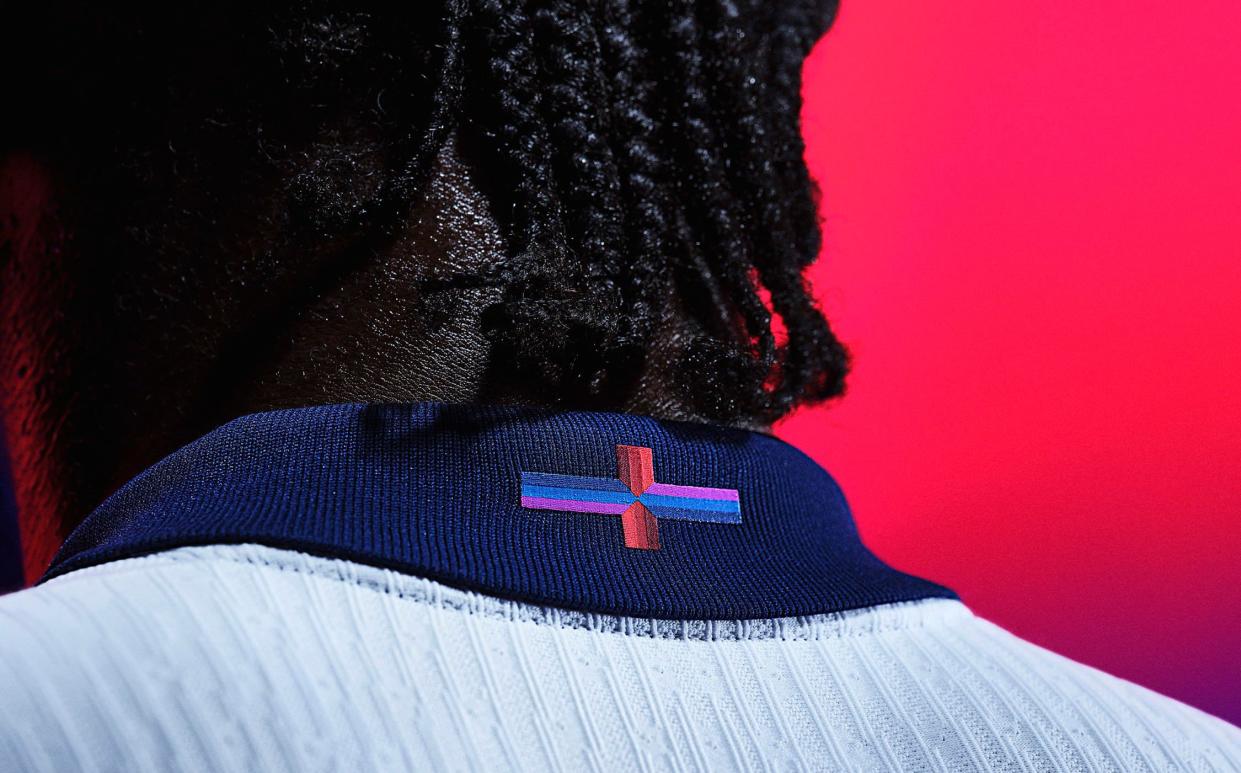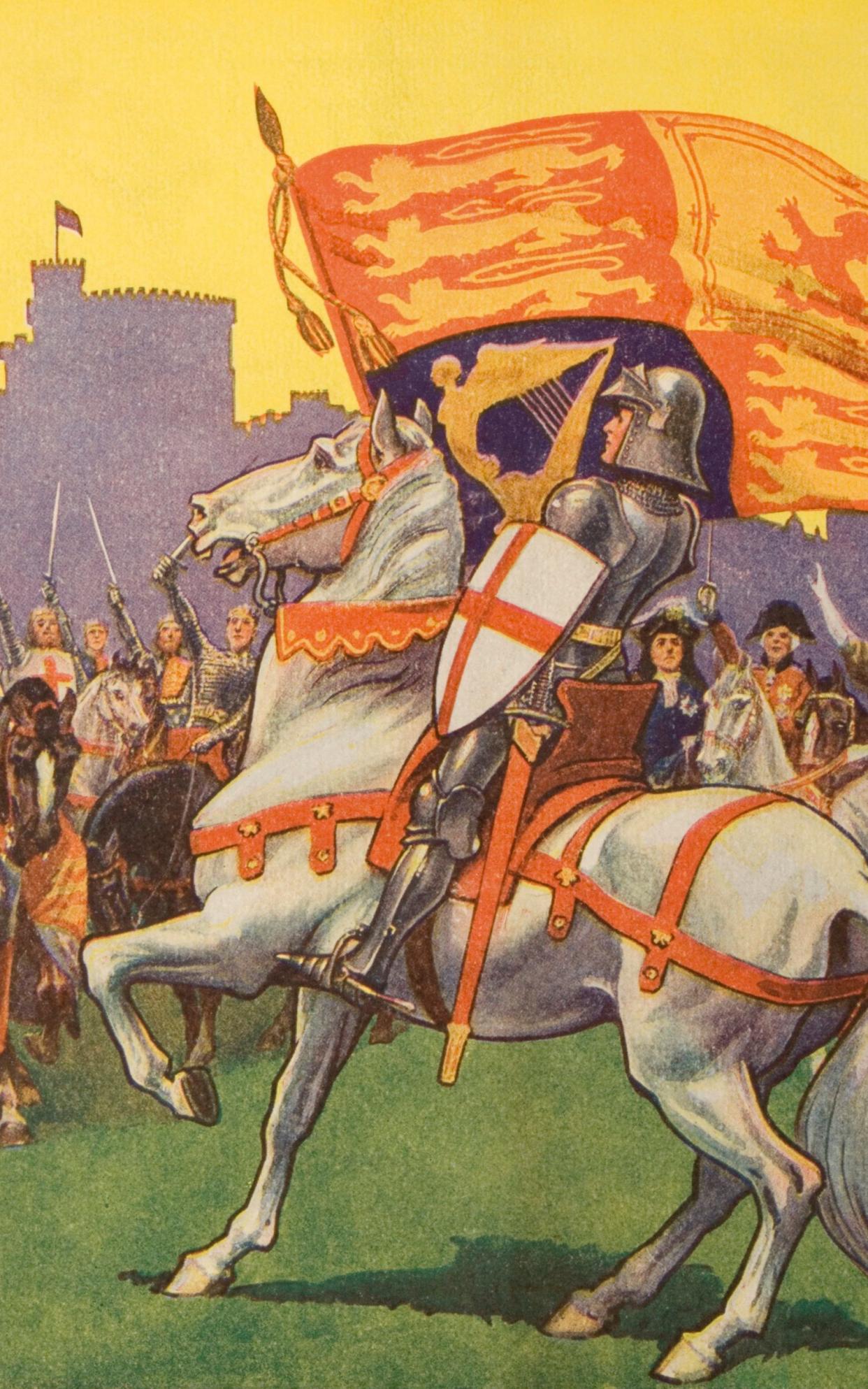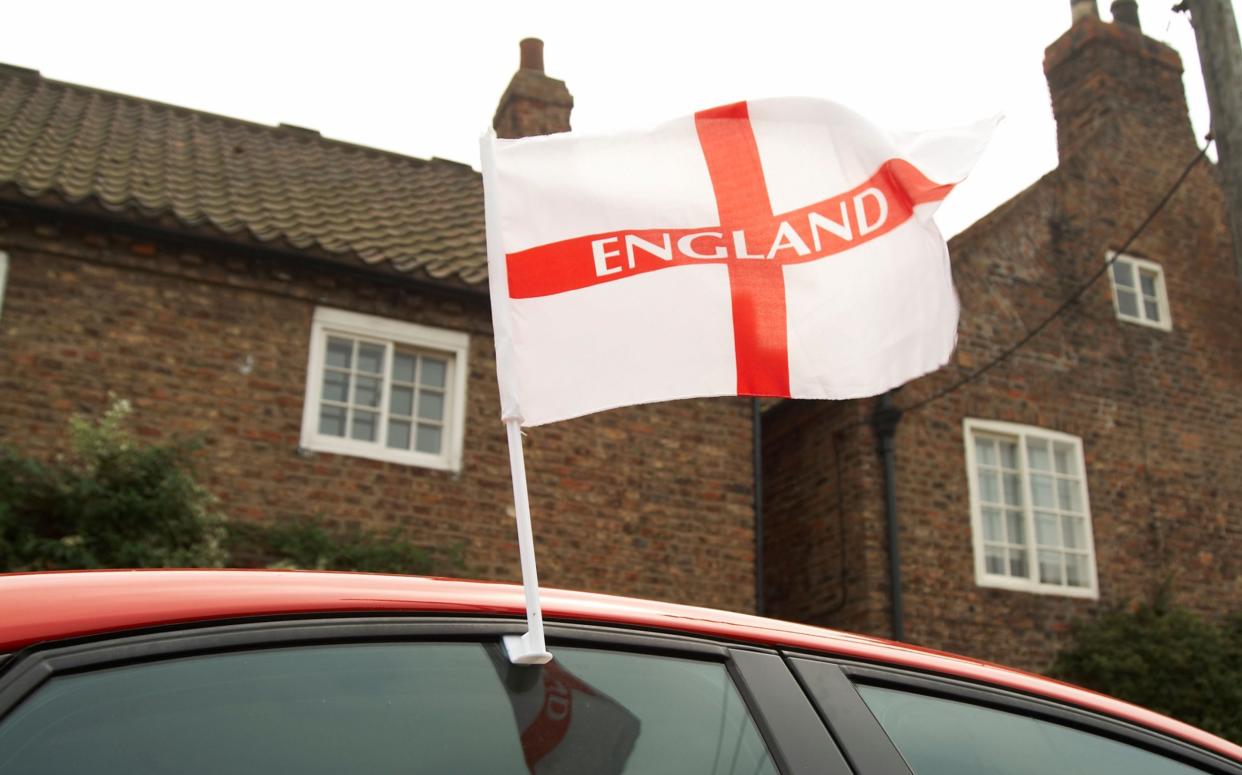How the hard left came to hate the St George’s Cross – and everything they think it represents

It is rare one agrees with Sir Keir Starmer, but his plea to Nike, the sportswear company, to reconsider its “modification” of the St George’s flag on the collar of a redesigned England football shirt is correct. Nike, an American company based in Oregon, is telling him, and countless others who think like him (eventually including Rishi Sunak, slow off the mark in objecting but objecting nonetheless) to get lost. Neither Nike, nor the ever-greedy and cynical Football Association, proposes to recall the shirt.
One doubts Nike would be so cavalier were an English company mucking about with the Stars and Stripes. As one Twitter (or X) user asked the firm: “Which other country’s flag have you done this to?” It smells like the old question of England as the world’s whipping boy, ripe for the sort of contempt people would shrink from dishing out to any other civilised country.
Happily the public, like our senior politicians, are not taking this quietly. A petition is online, and thousands have signed it, endorsing this message: “I would love to buy this new shirt, but cannot while it shows the Cross of St George defaced. Please change the shirt.” Nike is lucky we are a decent people: in some countries such flag abuse would provoke something far worse than a petition and a few insults.
Nike decided that the traditional St George’s flag – a red cross on a white background dating from Richard the Lionheart’s crusades 835 years ago – should undergo “reinterpretation” by supplementing it with stripes in “a gradient of blues and reds topped with purple”. It called this a “playful update” to the shirt before the 2024 European Championships. But why bother?
One reason appears to be the old commercial trick of frequently updating football kit so that children in particular can constantly badger their parents to buy them the latest version, making Nike and its shareholders even richer than they already are. The new shirts knock out at a mere £125 a time (a trifling £90 for the children’s version), causing one to gawp at profit margins that must be near the size of St George’s Channel. Unwittingly, Nike has given parents an ideal opportunity to teach their offspring what the word “no” really means.
It is ironic that Nike should wish to insult England’s national flag using a football shirt, because it was the so-called “beautiful game” that brought the Cross of St George back into everyday use nearly 30 years ago. In 1996, during that year’s European Championships, and amid increasingly militant Scottish and Welsh nationalism (those parts of the United Kingdom voted the following year for devolved assemblies), the St George’s flag was resurrected and flown or displayed proudly on buildings, on T-shirts, on bumper stickers all over England, not as some sort of far-right statement, but as a symbol of England’s belief in its football team.

There was no purple or blue in it: just the familiar red cross on a white background. It seemed odd, though pleasing, to see this connection with our distant heritage; indeed, it was almost as though we were echoing the glories of Plantagenet and Tudor times. Growing up in the 1960s and 1970s, the only place I saw a St George’s flag was on church towers: it had almost ceased to be a secular symbol, despite having been the only flag of England until the Union of the Crowns, after the accession of James I and VI in 1603 gave rise to the first iteration of the Union flag, or Union Jack.
And, indeed, even after the invention of the Union flag, England retained the Cross of St George as its flag: it is the symbol for those of us who profess an English identity, something that is not, at any rate yet, against the law. There is no doubt that through the empire-building era of the 19th century and the two world wars of the 20th – and for some time afterwards – most English identified principally as British, and their flag of choice was the Union flag. However, with the rise of nationalism elsewhere in the Kingdom, that has changed.

As well as disobliging the Prime Minister and the Leader of His Majesty’s Loyal Opposition, Nike’s offensive stunt has annoyed a legion of England football fans, who have their own clear idea of the symbolism of their country and their team. They have taken to Twitter in their droves to accuse Nike of being “disrespectful” and, inevitably, “woke”.
There is a clear, and regretful, understanding that to some on the hard left the unadulterated St George’s flag symbolises English nationalism, and that English nationalism – as opposed to the Scottish, Irish or Welsh variety – must be inherently evil. Tiny minority parties of thugs on the extreme right have adopted the Cross of St George; but it belongs to the rest of us, who do not share their ideologies, and we are in the vast majority. We are entitled to our English identity, and to express it in a civilised way, such as by displaying our ancient national symbol: who can imagine such criticism of the Saltire, or the Welsh dragon?
Sir Keir patently understands this, and it appears to be what triggered his lament against Nike, stating: “I’m a big football fan, I go to England games, men and women’s games, and the flag is used by everybody. It is a unifier. It doesn’t need to be changed. We just need to be proud of it.”
He might share these thoughts with his colleague Emily Thornberry, the shadow attorney-general, who at a by-election in 2014 ridiculed some people in Kent for displaying the flag prominently on their property, assuming they were tiny-minded little Englanders. She had to apologise, and resign her then shadow post. Sadly, there’s a lot of it about among those whose knee-jerk is mindlessly to signal virtue whenever possible.

It is brave, and indeed consistent, of Sir Keir to defend the English flag. The sort of person who hates it bears a strong resemblance to the extremists he has been trying to kick out of the Labour party ever since he became its leader. They are, all too often, the self-hating English.
For them, from its creation as an emblem of the 12th and 13th-century battles Christendom was fighting against the Islamic world, the St George’s flag has been a symbol of oppression and bigotry. (They ignore the fact that, at the time, the Islamic world was seeking to impose its own culture and religion on much of Europe, so it took two to tango.) They see the flag as a symbol of colonialism, of the oppression of non-English people in these islands, and of the Westminster-based political order and general national values that they militantly reject.
Was this what Nike was trying to achieve in defacing the English flag? Who knows. Perhaps resentment at the English colonising America dies hard, though Nike and its billions would probably not exist if that colonising had not happened more than 400 years ago. Whatever its motives, it has made an almighty misjudgment: as one hopes the non-ringing of cash registers around this green and pleasant land is about to confirm.


